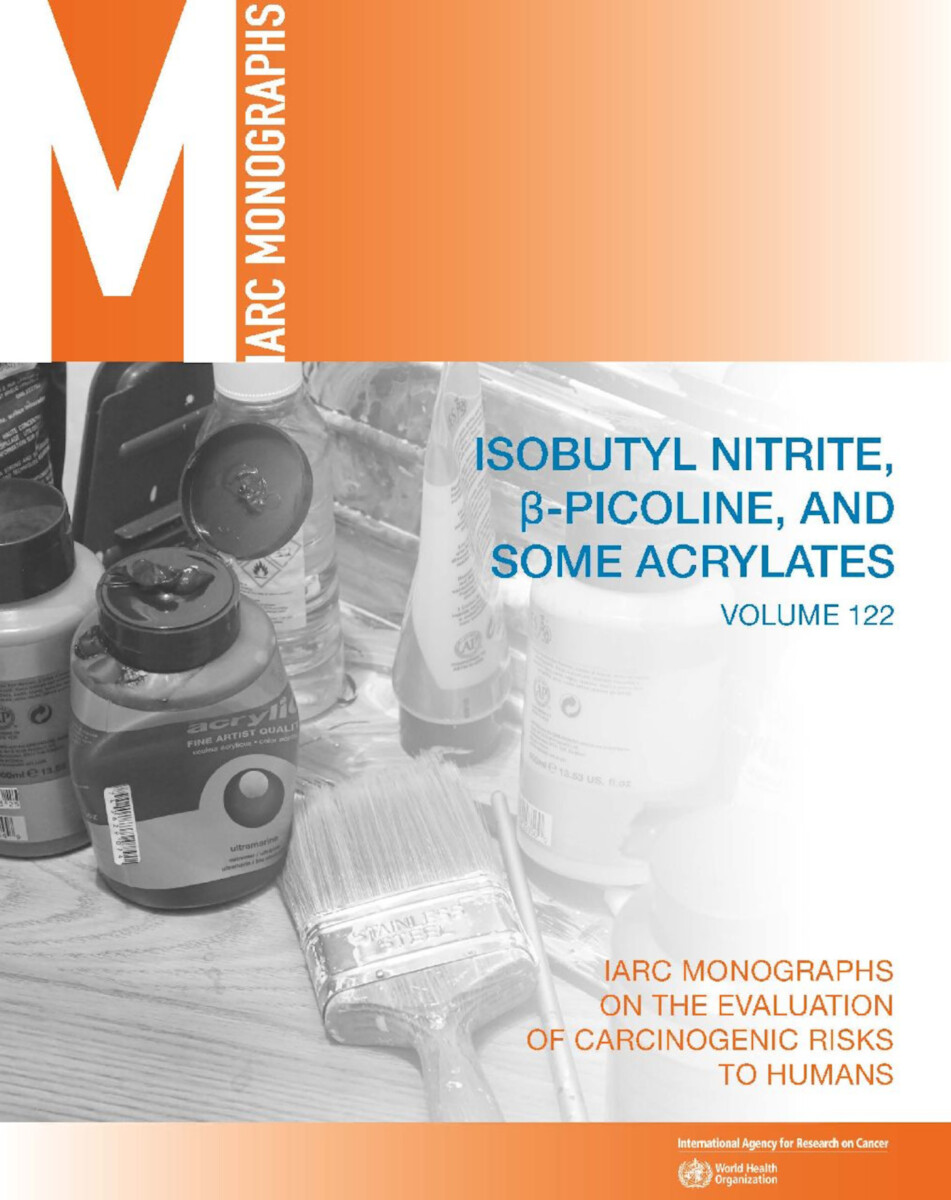Isobutyl Nitrite, Beta-Picoline, and Some Acrylates
- Publisher
World Health Organization - Published
6th August 2020 - ISBN 9789283201601
- Language English
- Pages 175 pp.
- Size 8" x 10"
This volume of the IARC Monographs provides evaluations of the carcinogenicity of isobutyl nitrite, beta-picoline, methyl acrylate, ethyl acrylate, 2-ethylhexyl acrylate, and trimethylolpropane triacrylate.
The four acrylates evaluated are chemicals with a high production volume that are produced worldwide. Methyl acrylate is used in the production of acrylic fibres and fire-retardant fabrics. Ethyl acrylate is one of the principal monomers used worldwide in the production of styrene-based polymers which can be used for medical and dental items. Ethyl acrylate is also used in surface coatings for textiles, paper, leather, and food contact materials, and as a food flavoring agent. 2-Ethylhexyl acrylate is used as a plasticizing co-monomer in the production of resins for pressure-sensitive adhesives, latex paints, reactive diluent/cross-linking agents, textile and leather finishes, and coatings for paper. Trimethylolpropane triacrylate, available as a technical-grade product that also contains incomplete reaction products, is used primarily in production of ultraviolet-curable inks, paint additives, coatings, and adhesives.
Beta-Picoline, a methyl pyridine, is widely used as a starting material for pesticides (e.g. chlorpyrifos) and pharmaceuticals (e.g. vitamin B3). It is also used as a flavoring substance in foods and beverages. Isobutyl nitrite is used as an intermediate in the syntheses of solvents and fuels and exposures also occur through its use as a recreational drug.
Exposure to all six agents considered may occur in the general population as well as in various occupational settings.
An IARC Monographs Working Group reviewed epidemiological evidence, animal bioassays, mechanistic and other relevant data to reach conclusions as to the carcinogenic hazard to humans of environmental or occupational exposure to these agents.
International Agency for Research on Cancer
The International Agency for Research on Cancer (IARC) is part of the World Health Organization. IARC's mission is to coordinate and conduct research on the causes of human cancer, the mechanisms of carcinogenesis, and to develop scientific strategies for cancer control. The Agency is involved in both epidemiological and laboratory research and disseminates scientific information through publications, meetings, courses, and fellowships.


